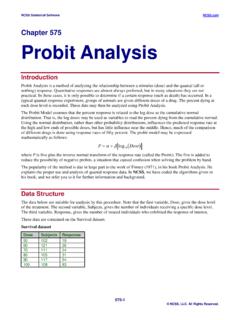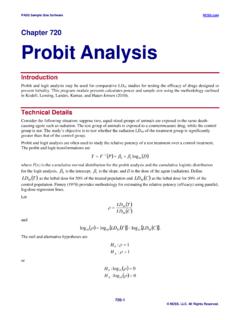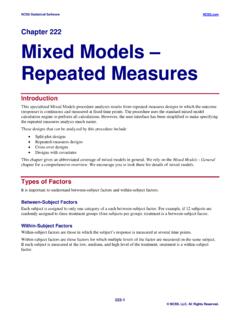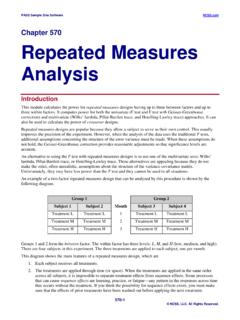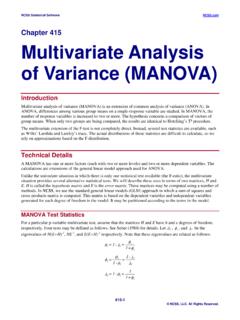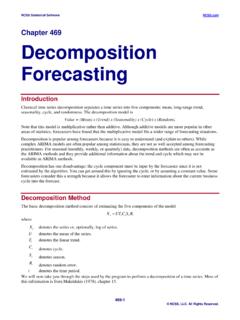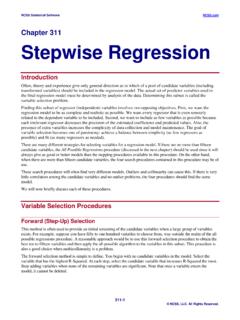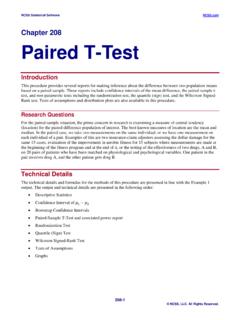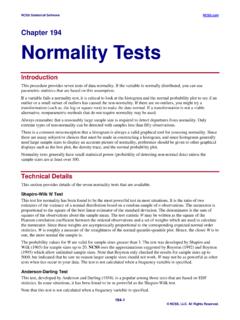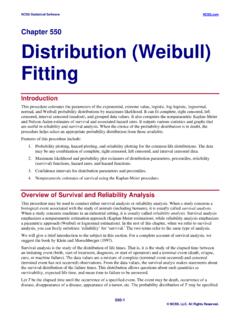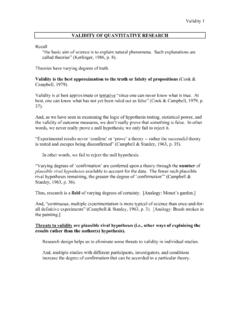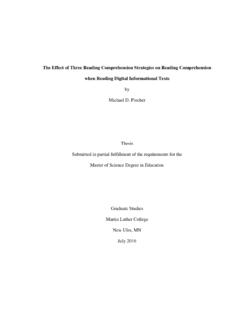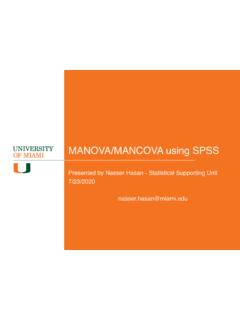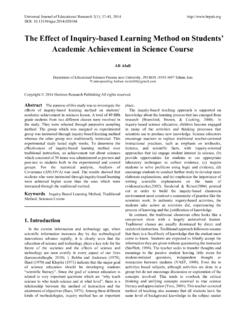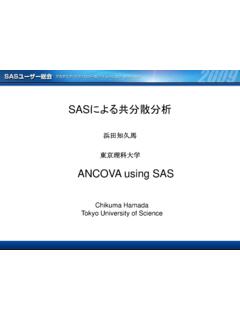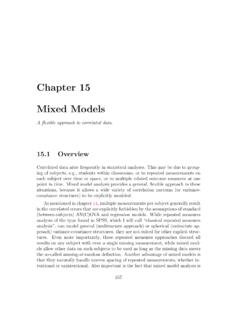Transcription of General Linear Models (GLM) - NCSS
1 NCSS Statistical Software 212-1 NCSS, LLC. All Rights Reserved. Chapter 212 General Linear Models (GLM) Introduction This procedure performs an analysis of variance or analysis of covariance on up to ten factors using the General Linear Models approach. The experimental design may include up to two nested terms, making possible various repeated measures and split-plot analyses. Because the program allows you to control which interactions are included and which are omitted, it can analyze designs with confounding such as Latin squares and fractional factorials.
2 Kinds of Research Questions A large amount of research consists of studying the influence of a set of independent variables on a response (dependent) variable. Many experiments are designed to look at the influence of a single independent variable (factor) while holding other factors constant. These experiments are called single-factor experiments and are analyzed with the one-way analysis of variance (ANOVA). A second type of design considers the impact of one factor across several values of other factors.
3 This experimental design is called the factorial design. The factorial design is popular among researchers because it not only lets you study the individual effects of several factors in a single experiment, but it also lets you study their interaction. Interaction is present when the response variable fails to behave the same at values of one factor when a second factor is varied. Since factors seldom work independently, the study of their interaction becomes very important. This procedure will also analyze repeated-measures and split-plot designs.
4 These designs are popular in many disciplines in which experiments are needed that take several measurements on an individual through time. Examples are pre-post type tests administered to various groups of individuals. analysis of covariance ( ancova ) is another design that may be analyzed using this procedure. ancova is useful when you want to improve precision by removing various extraneous sources of variation from your study. NCSS Statistical Software General Linear Models (GLM) 212-2 NCSS, LLC.
5 All Rights Reserved. The Linear model We begin with an infinite population of individuals with many measurable characteristics. These individuals are (mentally) separated into two or more treatment populations based on one or more of these characteristics. A random sample of the individuals in each population is drawn. A treatment is applied to each individual in the sample and an outcome is measured. The data so obtained are analyzed using an analysis of variance table that produces an F-test. A mathematical model may be formulated that underlies each analysis of variance.
6 This model expresses the response variable as the sum of parameters of the population. For example, a Linear mathematical model for a two-factor experiment is Ymababeijkijijijk= + + ++() where I = 1, 2, .., I; j =1, 2, .., J; and k = 1, 2, .., K. This model expresses the value of the response variable, Y, as the sum of five components: m the mean. ai the contribution of the ith level of a factor A. bj the contribution of the jth level of a factor B. (ab)ij the combined contribution of the ith level of a factor A and the jth level of a factor B.
7 Eijk the contribution of the kth individual. This is often called the error. Note that this model is the sum of various constants. This type of model is called a Linear model . It becomes the mathematical basis for our discussion of the analysis of variance. Also note that this serves only as an example. Many Linear Models could be formulated for the two-factor experiment. Assumptions The following assumptions are made when using the F-test. 1. The response variable is continuous. 2. The eijk follow the normal probability distribution with mean equal to zero.
8 3. The variances of the eijk are equal for all values of i, j, and k. 4. The individuals are independent. Limitations There are few limitations when using these tests. Sample sizes may range from a few to several hundred. If your data are discrete with at least five unique values, you can assume that you have met the continuous variable assumption. Perhaps the greatest restriction is that your data comes from a random sample of the population. If you do not have a random sample, the F-test will not work.
9 When missing cells occur in your design, you must take special care to be sure that appropriate interaction terms are removed from the ANOVA model . Special restrictions apply when you are running an analysis with nested terms, as in repeated measures designs. First of all, you cannot have covariates with nested terms. Second, although the sample sizes of groups (the between factor) may be unequal, all data must be present for each nested factor. For example, if you are running a pre-post design, you must have both pre- and post- scores for each individual.
10 You cannot include individuals that have only one or the other. NCSS Statistical Software General Linear Models (GLM) 212-3 NCSS, LLC. All Rights Reserved. Comparisons Comparisons are only valid for fixed factors. A comparison is formulated in terms of the means as follows: CwmiijjjJ== 1 In this equation, there are J levels in the factor, the means for each level of the factor are denoted mi, and wij represents a set of J weight values for the ith comparison. The comparison value, Ci, is tested using a t-test.
